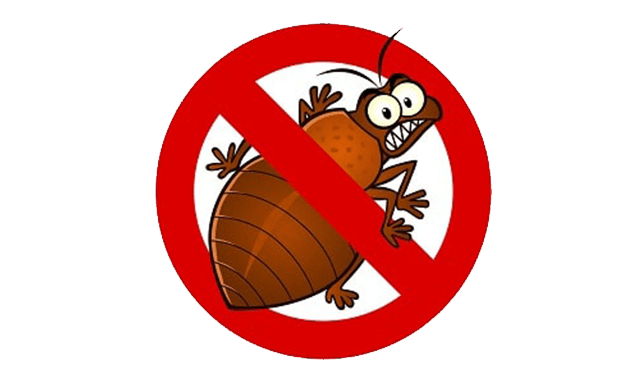
My problem is not as common, so I can't find an answer anywhere: how do I get rid of wood bugs in my house. I do not want to poison them, there are a lot of animals at home, children. I would like to find a compromise: not to destroy insects, which are generally useful, but also not to tolerate this unpleasant smell every day. I'm running out of ideas, just getting plant-based food sources out of the house. At first, when I was still inexperienced, tried to kill them - slapped them with a slipper. The effect was even worse, the smell then could not wash off. Already threw out several pairs of shoes at home. Please give me advice on what to do in this situation.
Anna.
The author of the portal answers the question:
In my material below, you will learn about all the varieties of wood (street) bed bugs found near us.
Woodbug - what does it look like? Is it dangerous to humans, living in an apartment
Insects of this group are so named because of their habitat. All shield-bearers have common features:
- There are three pairs of limbs;
- 1 pair of tendrils;
- Many insects in this group have eyes, but they are much better able to orient themselves due to their increased sensitivity (the antennae are responsible for this function);
- the body is flattened;
- The color can be green, brown;
- The shape of the body is pentagonal;
- The insect has rear transparent and front (leathery) wings.
У pests long proboscis, but it stretches out when the need for food arises.
Insects secrete a secret that contributes to an unpleasant odor, which is a reaction to any threat.
This is the main harm done to people.
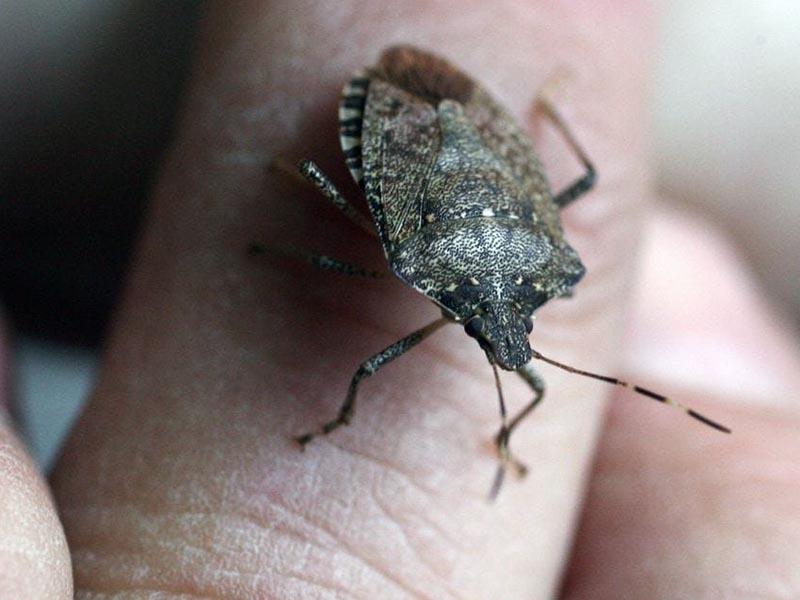
Signs of consistency that it is definitely a forest bug. Close-up photo
If there is any doubt that the caught pest is indeed a forest insect and also represents the family Shieldworts, one should pay attention to the shape of its body. The insect is shield-shaped, but the corners are rounded, and there is a roller (small elevation) in the center above.

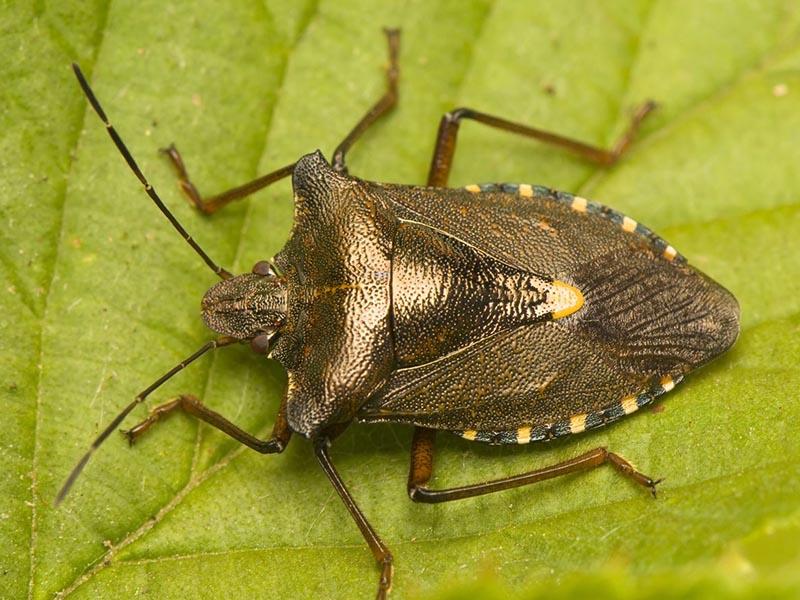
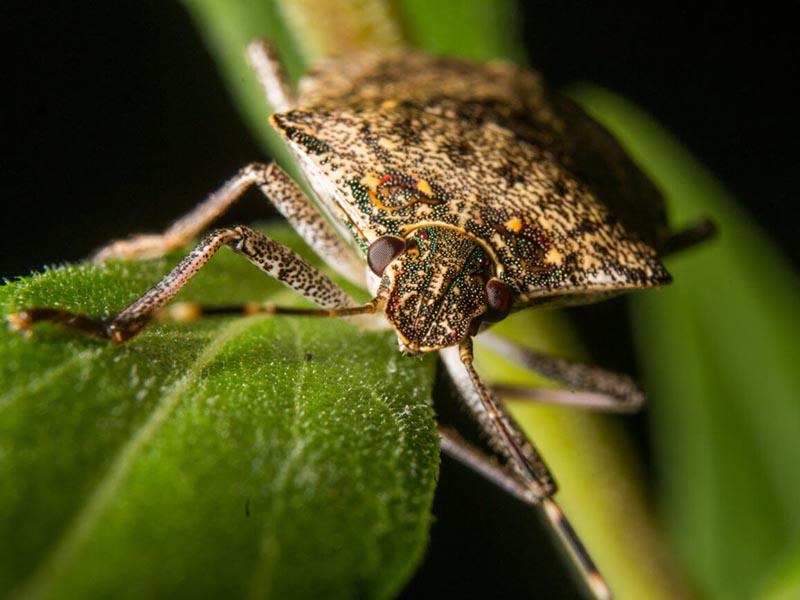

Species and variety of forest bugs
Forest bedbugs - is not the name of a particular pest. It is the name given to a group of individuals who share common habits, including eating habits, as well as external traits. It includes individuals:
- wood - There are many species of these pests (more than 300), they prefer to live on trees, respectively, destroying leaves and fruits, and the body length can vary (from 5 to 35 mm);
- Berry Scutellaria - reach a length of 10-12 mm, chitinous shell is colored brown, can be reddish, even lighter (with yellowing), they eat berries (e.g., raspberries, currants), but are also interested in herbaceous plants;
- Forest green - characterized by a green color, but can change the cuticle color to brown with the onset of cooler weather;
- Cruciferous - affects cultivated and wild plants, the distinctive feature is a bright pattern on the body;
- pest turtle differs in a more round body shape, it has a light brown color, the body length does not exceed 12 mm, such individuals overwinter in forests, for which they choose a leafy substrate.
The coloration of these individuals is often similar, distinguished by their dietary features.
Pests of different species destroy different plants. This does not prevent them from peacefully coexisting with each other over large areas in the wild.

Reproduction and life span
Bedbugs mating in the warm period of the year - spring, the first generation appears closer to summer. Some individuals produce 1 generation of young, while others produce more (2-3). Before mating, pests actively feed. After hibernation, they strive to increase energy levels, which will allow the female to make a clutch, the male facilitates this. In one approach bedbug can leave 30-100 eggs on a leaf (back side) or fruit.
The clutch is made as close to the feeding sites as possible, so that the larvae that emerged from the shells immediately begin to feed.

Eggs
They are rounded formations flattened on both sides. The edges of the lid are visible, through which the larvae emerge. Eggs of the forest bedbug reach 1-1.3 mm in length. Their color can be different, which depends on the species of the pest. For example, there are green, brown eggs. Sometimes these formations gradually darken when the end of embryo development is approaching. Then the eggs take on a richer color.
Developmental time is up to 2 weeks; if the climate is warm, larvae may appear after 1 week.
The empty shells remain where they were. They are firmly fixed by a special secret that the females secrete during clutching.

Larvae
Insects do not proceed to the pupation stage. Larvae emerge from the eggs (shells). Young pests are characterized by the same size as the eggs. But they develop quickly - in 1-1.5 months. There are up to 5 stages of molting. At each of them the insect grows up to 1-1.5 mm, sometimes less.
The larvae have not yet formed outer covers, the need for molting confirms this.
This feature allows for faster destruction of young individuals, they are more susceptible to the effects of chemicals.
Outwardly, the larva is easily distinguished from the imago. Despite some resemblance, these pests are still very different from the adults. They are smaller and often have a different coloration, darker and brighter. Young insects cannot fly or mate.
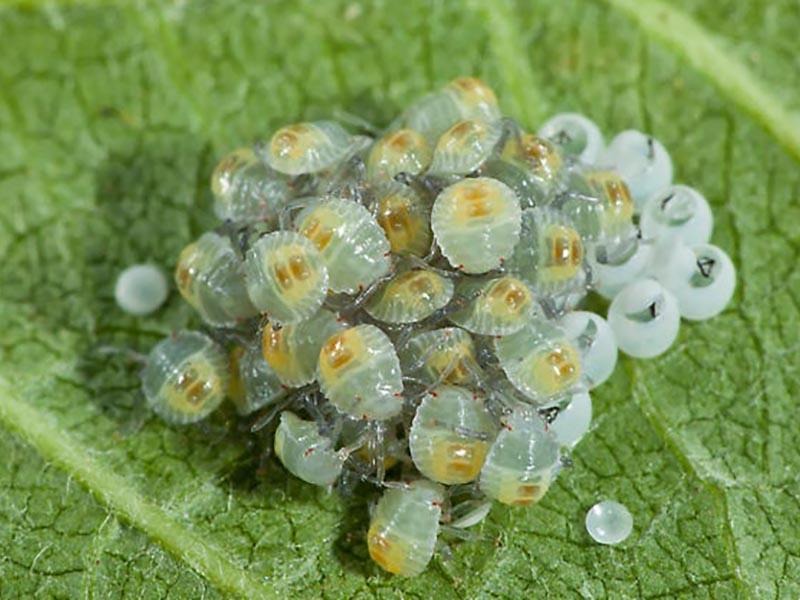
What and how it feeds
Forest bugs of all species pierce the soft tissues of plants with their proboscis. Saliva is injected through the proboscis to change the properties of the sap, which accelerates its digestion. Insects start to eat almost immediately after coming out of hibernation. In winter, they do not need to eat. When these pests appear, plants are threatened until mid-autumn.
This is followed by a cold period when the insects prepare to enter the diapause phase.
They eat plants of different species: cultivated, wild-growing, fruit trees, bushes, herbaceous plants, etc. Some species of insects consider dead insects as additional or main sources of food. To obtain nutritive sap, they inject a substance that liquefies the tissues of the victim.

What varieties of wood bugs are most often found in people's homes
Different members of the shieldworms (forest-dwelling species) are found in human dwellings. All of them can end up in an apartment or a house, which happens for different reasons:
- search for a warm place, sometimes with temperature changes the insects mistakenly take the microclimate in a person's home for warmth and rush there;
- accidentally - along with people's belongings when they go on a picnic, outing, camping, or hunting trip.
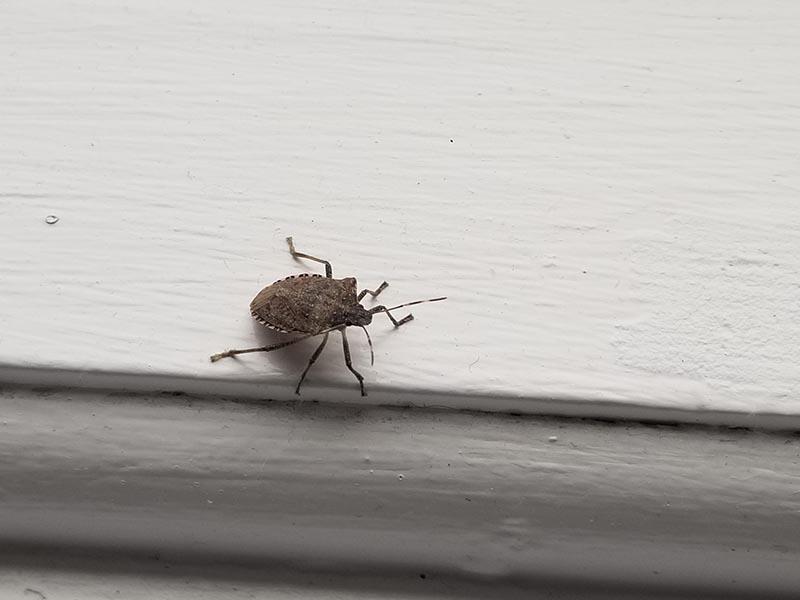
Signs of appearance
Bed bugs don't always make themselves known right away. The human home is an unnatural environment for them to live in. This means the pests will fly to the light, the windows, and this is where they often find plants.
But unfamiliar places prevent them from feeling free, the stress does not allow them to continue the breeding process.
You may notice insects flying from place to place in the room. Also, when stressed, bed bugs emit a distinct odor.
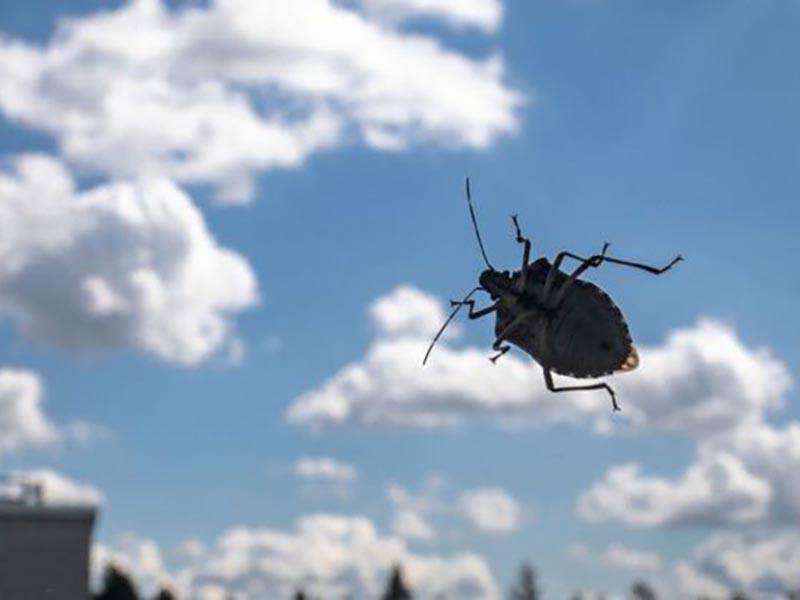
What insects can be confused with
When forest shieldmen are encountered, they are often mistaken for others:
- American bug - its food is cones, after contact with the pest they rot, dry out;
- Red-footed Shieldfoot, which destroys not only plants but also other insects, the color brown with a glossy sheen, you can see the bronze undertones;
- The double-toothed is a useful predator, destroying pests of more than 250 plants, which allows you to save your crops.


The characteristic smell of a forest bug
The glands that help release the odorant are in the foot area of the insects of this species. Forest bugs do not all emit a strong odor. Its intensity is determined by the need for protection against a perceived threat. Some individuals have no such function at all. The strong odor is due to the presence of cymic acid in the secretion.
The substance is poison to other insects, but people should not be afraid of it.
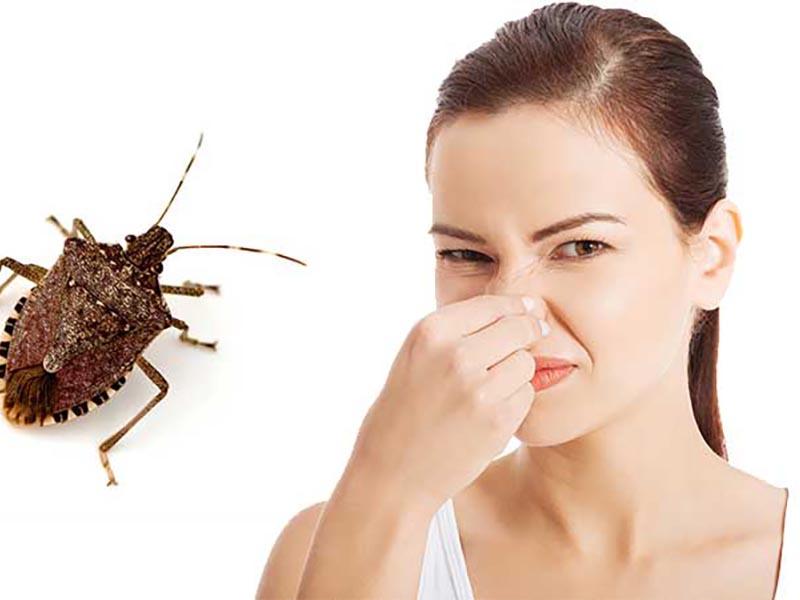
What to do when you find a nasty neighbor - a bedbug at home
There is no need to kill them in your apartment or home. The only harm that bed bugs cause is tainted air.
To avoid frightening the insects and to avoid releasing the strong-smelling substance, you can open the windows and wait for them to disappear on their own.
If this does not happen, remove the insects themselves outside the home. But it is important to wear gloves first.
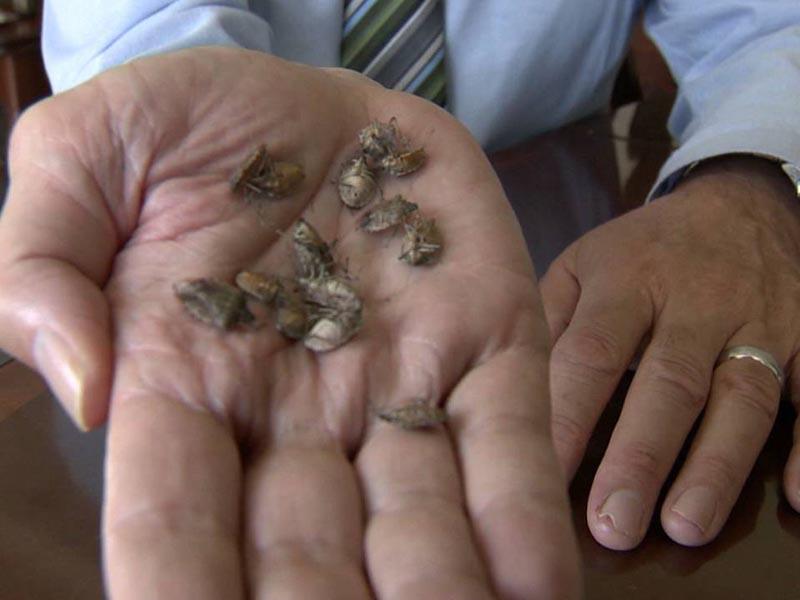
Are wood bugs and their bites dangerous?
Such pests do not know how to bite. Even individuals that feed not only on plants but also on insects do not have a sufficiently powerful mouthpiece. They have a stabbing-sucking type. It is impossible for an insect to make a bite this way. From this point of view, wood bugs are not dangerous.
If someone bit a man, you need to look for the cause further, because the insects of this species have nothing to do with it.
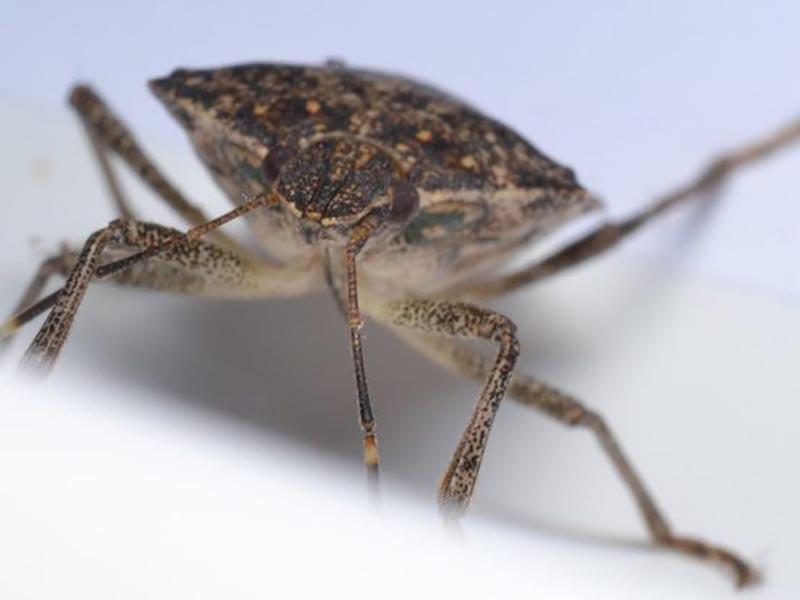
Forest bugs on the property
When pests appear on the site (and there is always a possibility, because they fly), they must be dealt with. They look inconspicuous, so there is a risk of missing the beginning of the infestation, the mating period, reproduction, larval development, which will lead to a multiplication of bed bugs.
For this reason, you need to start fighting as soon as the pests have been found.
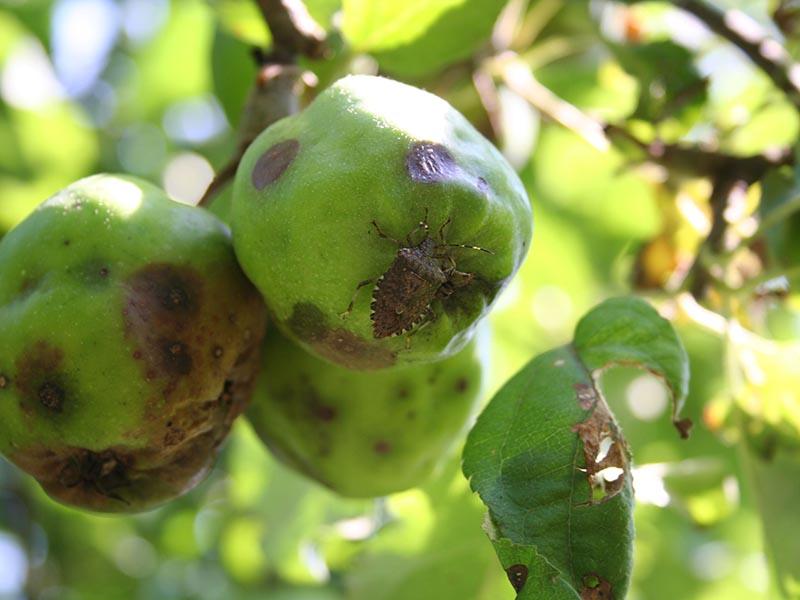
Forest bug - pest or helper
Given that such insects do not seek to attack humans, do not bite them, many people consider them completely harmless. Having studied the information, what the forest bug eats, you can suspect them of the opposite: pests of this group destroy crops, plantings. But I also wonder if there is any benefit from them on the plot.

Harm caused by numerous insects
The target of forest-dwelling bed bugs is plants. Most members of this group are herbivorous. The insects feed on grasses and suck the sap from trees and fruits.
The substance, which is administered while eating, is harmful to the plantation.
This changes the structure of plant tissues. Plants wither and fruits shrivel.
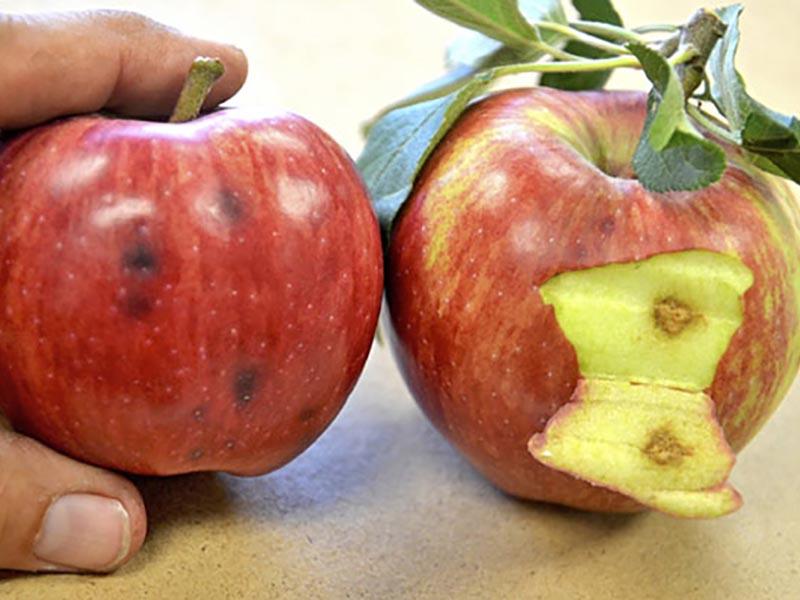
Is there any benefit from insects
Forest bugs are mostly useless. Plant-eating bugs are mostly harmful. When they talk about the benefits they bring, we can mention the possibility of using wood bugs to destroy some of the weeds, because they parasitize the first greens in early spring. Cultivated plants don't develop that early. So, the bed bugs will look elsewhere for young sprouts.
Video review: species and variety of colors of forest bugs living next to humans
Question and answer section
When the task is to get rid of pests on the plot, they try home methods. If something does not go as planned during the treatment, it is possible to clarify the information with a specialist, for example, on an online resource.
Wood and bed bugs: how they interact, how they differ


How long do wood bugs live?

Can a forest bug exterminate house bugs?

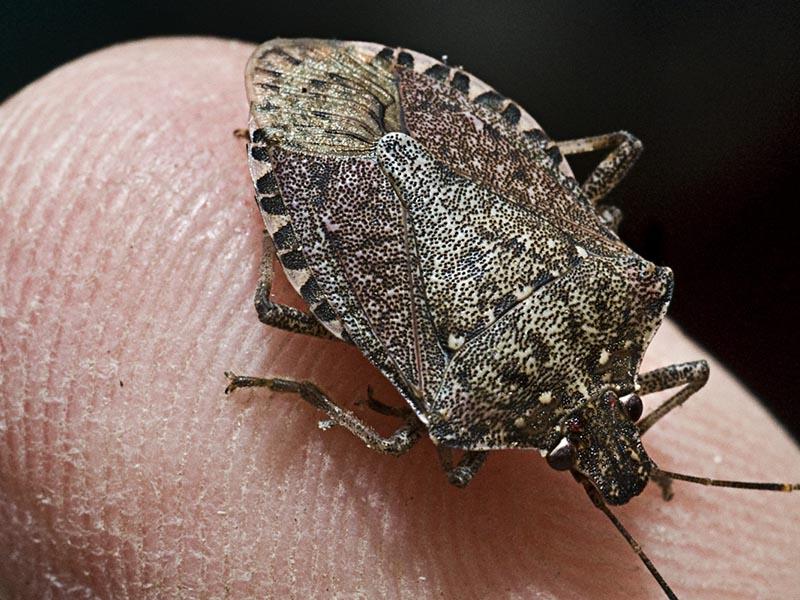
Interesting facts about bed bugs that live in the woods
Some little-known features of such pests:
- sensitive antennae replace the insects' eyes, which is important if the organs of vision are reduced;
- Some individuals that live in natural conditions mate for several days (literally mate with each other);
- unlike water insects, forest dwellers mostly do not take care of their offspring, but simply make clutches.
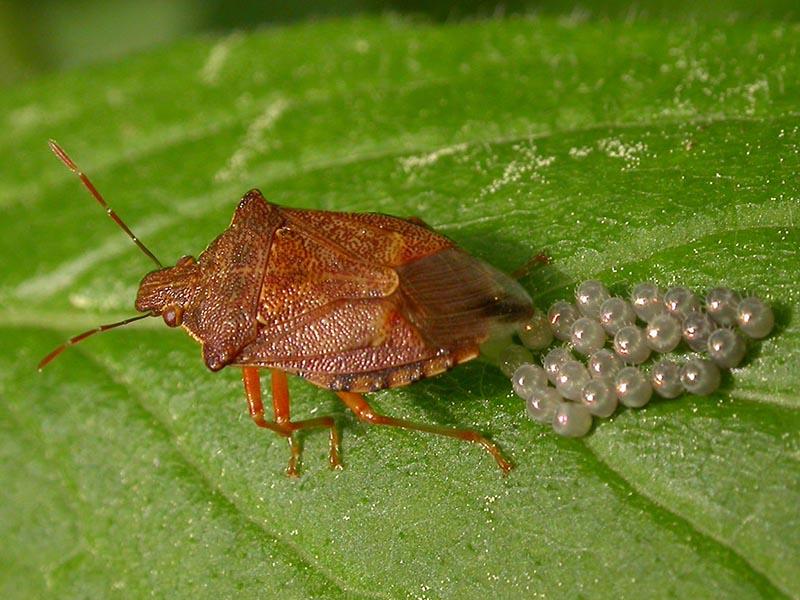
Forest bug for alcoholism
Several insects (5 to 7) are used. In this case, their smell will help to disgust the person drinking alcohol. It is enough to dip the bedbugs in 500 ml of vodka (alcohol, 60%). The duration of preparation of the tincture is 5 days. Then it is strained, and given to an alcoholic.
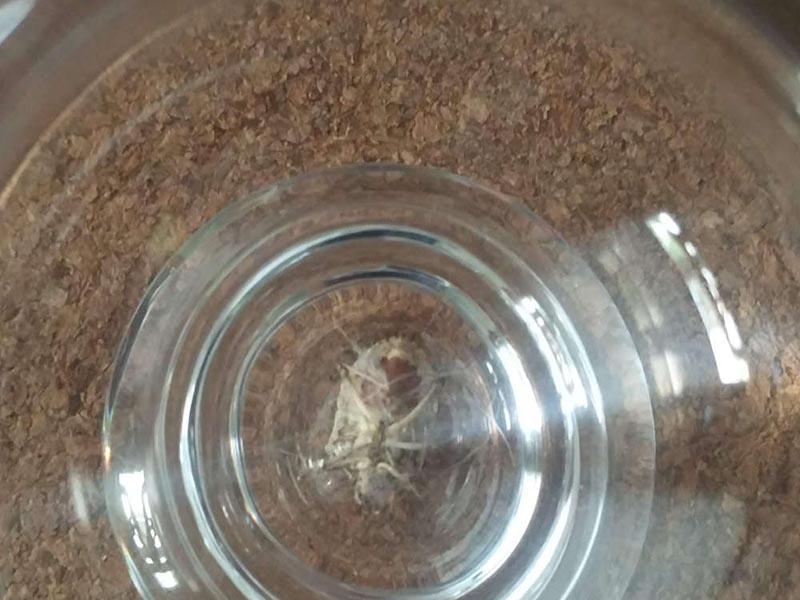
Omen of a forest bug on the body
All superstitions are associated with unpleasantness. The omens are similar: it is believed that the appearance of bed bugs in the apartmentThe reason for this is that insects usually come to a person's side when the energy level is low. This is explained by the fact that insects usually come to a person's side when the energy level drops. It means that negative processes are already developing, and the presence of bed bugs is a kind of signal that such changes are possible and one should prepare for them.
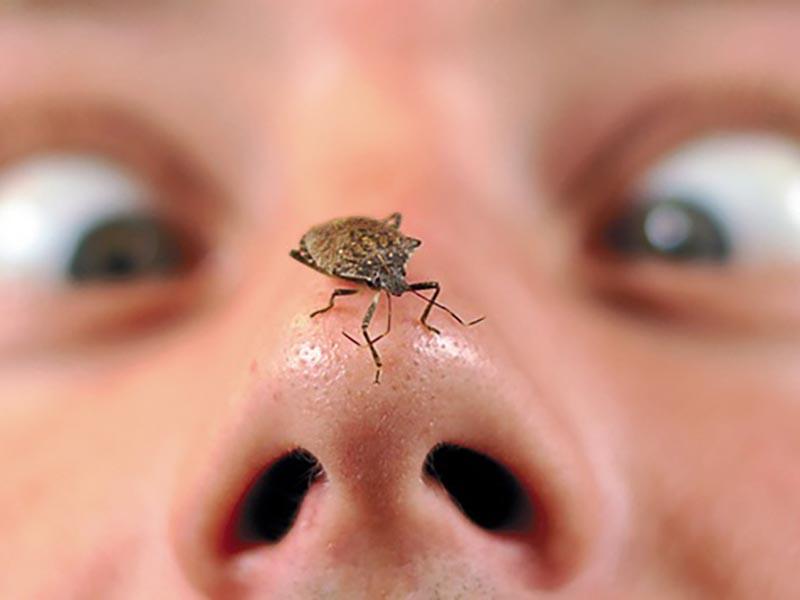
How to get rid of pesky pests. The most effective measures to control them in the garden
Figuring out what kind of creature is on the property (you need to know what the woodsman looks like) bedbug), begin pest control. To do this, first of all apply methods:
- mechanical collection (effective when infestation has just happened);
- use biological agents based on spores of fungi, bacteria, which are not so dangerous to people, they do not harm the soil, plantings, but effectively destroy bed bugs.
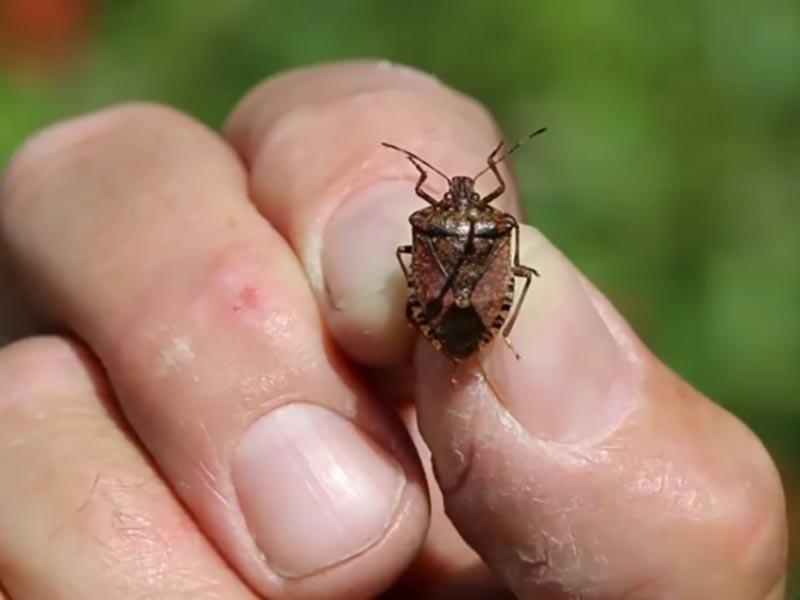
Chemicals (insecticides)
These preparations contain toxic substances. Insecticides aim to kill insects that live on the site. But this type of drug is not suitable for humans.
The most commonly used agents against bed bugs are neonicotinoids.
The preparations are usually available in concentrate form. It must be diluted with water in the proportion recommended by the manufacturer. Examples of such preparations:
- Carbofos;
- Actara;
- Karate Zeon.
Such drugs can't stand up to either Stinkbugnor berry shield or representatives of other species.

Folk methods of disposal
These agents are effective at the initial stage of infestation of an area, as well as in the case if bed bugs have not yet appeared - the substances are used for prevention.
Their goal is to create unacceptable living conditions for forest bugs.
Some recipes:
- Mustard powder: the best option is considered based on a ratio of 1:10, with more water than the main component, which avoids burns on the plants;
- soap solution: dissolve laundry soap (300 g) in a bucket of liquid and water the plantings.
Prepared solutions cannot be used every day. They are used at intervals of 3 to 7 days, and it is important not to abandon the treatment, but to spray the substance at least 5 times.
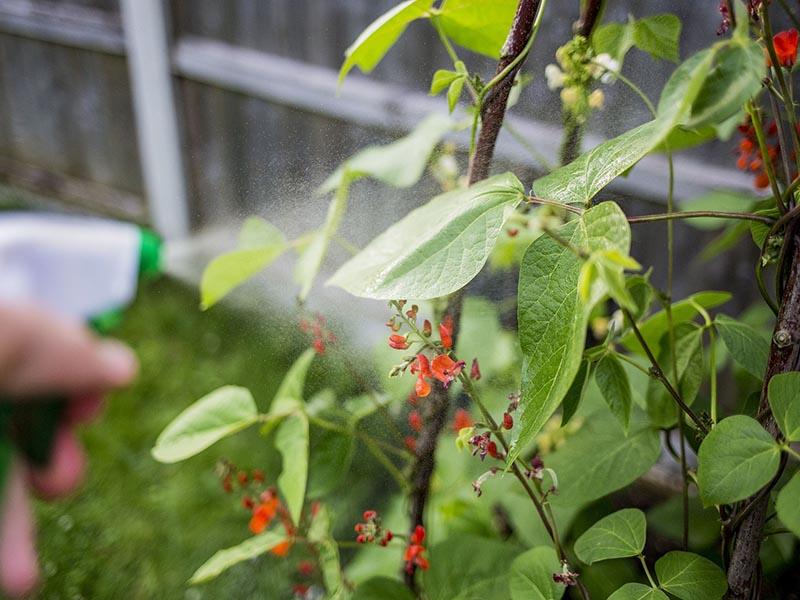
Measures to prevent reinfection
Considering the peculiarities of this type of insects, as well as their development, food and other habits, a number of measures can be taken to prevent the infestation of the site:
- twice a year, in the fall after the harvest and in the spring in March;
- Throughout the warm period of the year, collect organic debris where pests can hide;
- use herbs with a strong odor: spread wormwood around the plot or grow clopogon.

Vegetable gardeners' reviews

Expert tips

- insecticides, which are most commonly purchased for pest control, do not provide an ovicidal effect, which means re-treat the area after 2 weeks;
- If the drug with prolonged action is used, you can skip the repeated procedure of insecticide spraying, because in this case the insects will still die, they will receive a dose of poison, which does not lose its properties over a long period of time.

Conclusion
The forest bug is represented by a large number of individuals. But the most common is green pest. It is skillfully camouflaged, changing color closer to the fall. Its other characteristics are:
- The insect develops in stages, but it skips the pupation phase. The main stages are egg, larva, nymph, and imago. The mature specimens, unlike the young, can fly and can reproduce.
- The forest bug is often confused with the red-legged, American pest. But it is distinguished by the presence of a five-pointed back, resembling a knight's shield - the main feature of shieldflies.
- The pest feeds on plant sap, and representatives of some species also feed on insects. To prevent the infestation of a vegetable garden, use biopreparations, insecticides and folk remedies. In this case, the rules of treatment should be observed, and a break between treatments should be observed.
